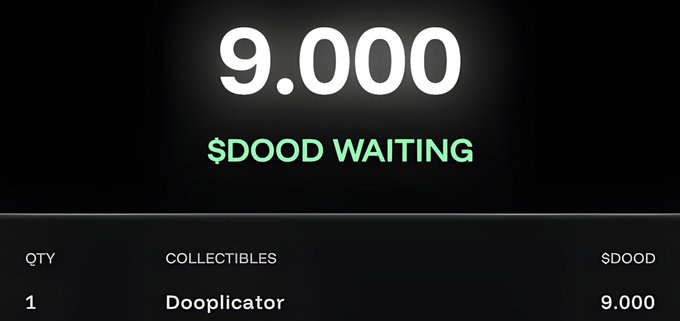El principal objetivo del sector de las criptomonedas es crear Web3, una versión descentralizada de Internet basada en la tecnología de blockchain. Sin embargo, las actuales blockchains, principalmente las de primera y segunda generación como Bitcoin (BTC) y Ethereum (ETH), se enfrentan a problemas de aislamiento e interoperabilidad limitada. Para hacer realidad la visión de Web3, es esencial lograr la interoperabilidad de las blockchains. Proyectos como Clover Finance (CLV) han surgido para dar respuesta a esta necesidad.
¿Qué es Clover Finance?
Clover Finance es una parachain de Polkadot con interoperabilidad total con Ethereum Virtual Machine (EVM). Su objetivo es mejorar la interoperabilidad cross-chain y la experiencia del usuario en el sector de las finanzas descentralizadas (DeFi) proporcionando una infraestructura blockchain fácil de usar. Su diseño versátil también lo convierte en un marco adecuado para aplicaciones basadas en Substrate. Aunque Clover se fundó en mayo de 2020, su mainnet se lanzó en julio de 2021, marcando un hito significativo para el proyecto.
El equipo de Clover Finance
El equipo de Clover Finance está dirigido por los cofundadores Norelle Ng, Viven Kirby y Burak Keçeli. Ng, responsable de operaciones, trabajó anteriormente como asesora para Bithumb Global y cuenta con una amplia experiencia en la interacción humano-computador.
Kirby, jefe de proyecto, aporta su experiencia como planificador de recursos empresariales, habiendo trabajado como arquitecto de Microsoft Dynamics en AXSource antes de cofundar Clover. Keçeli es responsable del aspecto técnico de Clover Finance y es un reputado programador informático al que se le atribuye la creación de MBO Games y Staqq.
¿Cómo funciona Clover Finance?
Clover Finance funciona como un sistema operativo de blockchain versátil y completo, que ofrece una serie de servicios dentro de su red. Este consta de múltiples capas: una capa de almacenamiento, una capa de protocolo DeFi, una capa de contratos inteligentes y una capa de aplicaciones externas (eApp). Una de sus principales características es el bridge DeFi cross-chain de servicio completo, que permite una interoperabilidad sin problemas entre blockchains. La plataforma está dirigida a usuarios de todos los niveles de experiencia, por lo que es accesible tanto para expertos en DeFi como para principiantes.
CLV: token nativo de Clover Finance
CLV es la criptomoneda nativa de Clover Finance, introducida en julio de 2021. CLV no tiene un límite de emisión, a diferencia de algunos tokens con un suministro máximo fijo. La oferta total de tokens CLV asciende a 1.000 millones, con una oferta circulante de aproximadamente 583,3 millones de tokens CLV.
Casos de uso del token CLV
CLV, la criptomoneda nativa de Clover, tiene múltiples casos de uso dentro del ecosistema. En primer lugar, se utiliza para designar validadores de nodos, garantizando la seguridad y fiabilidad de la red. Además, los titulares de CLV pueden participar activamente en la gobernanza del protocolo, lo que les da voz en las decisiones y actualizaciones importantes. Más allá de la gobernanza, el token puede utilizarse para actividades de trading estándar, permitiéndoles a los usuarios comprar, vender e intercambiar CLV en varios exchanges de criptomonedas.
Distribución de CLV
CLV se distribuye de la siguiente manera:
- El 40 % está destinado a incentivos del ecosistema.
- El 15 % fue vendido en Coinlist.
- El 12 % queda en manos de la Clover Finance Foundation.
- El 10 % está destinado para los desarrolladores del equipo.
- El 10 % fue concedido a los primeros patrocinadores que apoyaron las primeras etapas del proyecto.
- El 7,5% fue usado para gastos de marketing para promover y hacer crecer el ecosistema.
- El 3 % está reservado para subvenciones a contribuyentes.
- El 2,5 % fue distribuido en una venta privada.
Clover Finance: Abriendo el camino para las blockchains interoperables
La tecnología blockchain está revolucionando rápidamente diversas industrias, ofreciendo una mayor eficiencia y abriendo nuevas posibilidades. Como tecnología del futuro, blockchain debe establecer Web3, mejorando las capacidades de comunicación, transferencia de datos y almacenamiento.
Sin embargo, un reto importante reside en la naturaleza aislada de la mayoría de las blockchains, cada una operando dentro de su propio sistema. Aquí es donde intervienen proyectos como Clover Finance, que presentan un paradigma revolucionario para acortar la distancia entre los distintos sistemas de blockchains. El objetivo de Clover Finance es conectar y unificar el panorama de blockchains permitiendo la interoperabilidad, fomentando un futuro descentralizado más cohesivo y conectado.






















